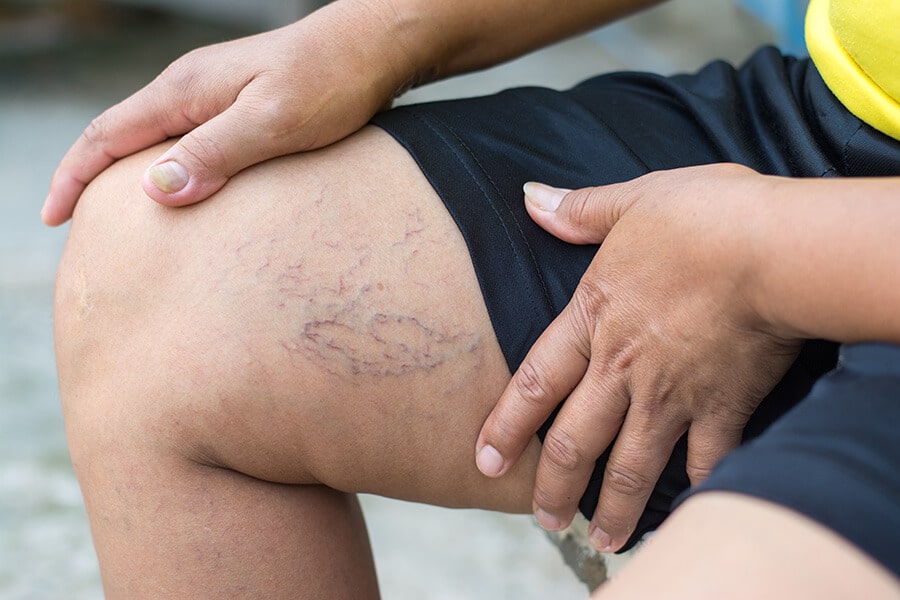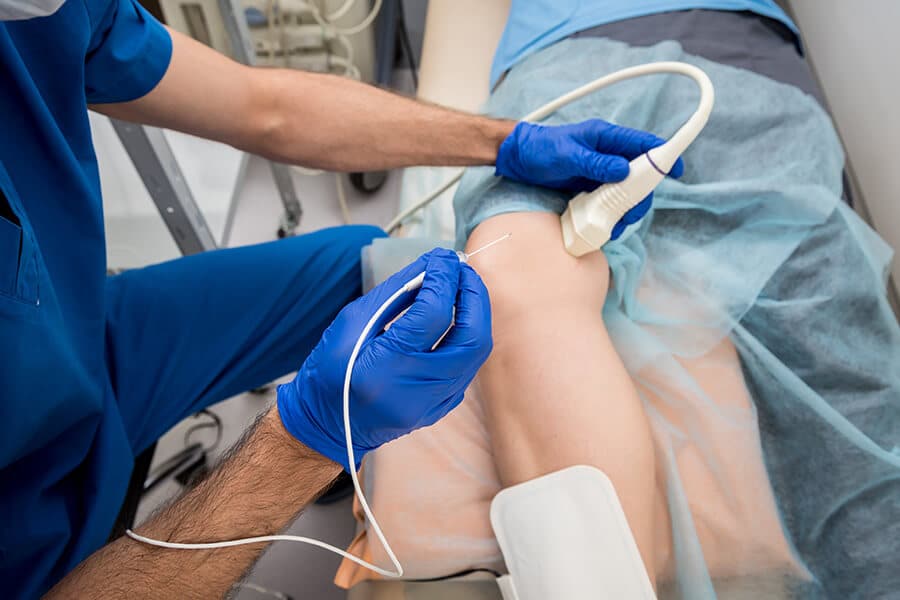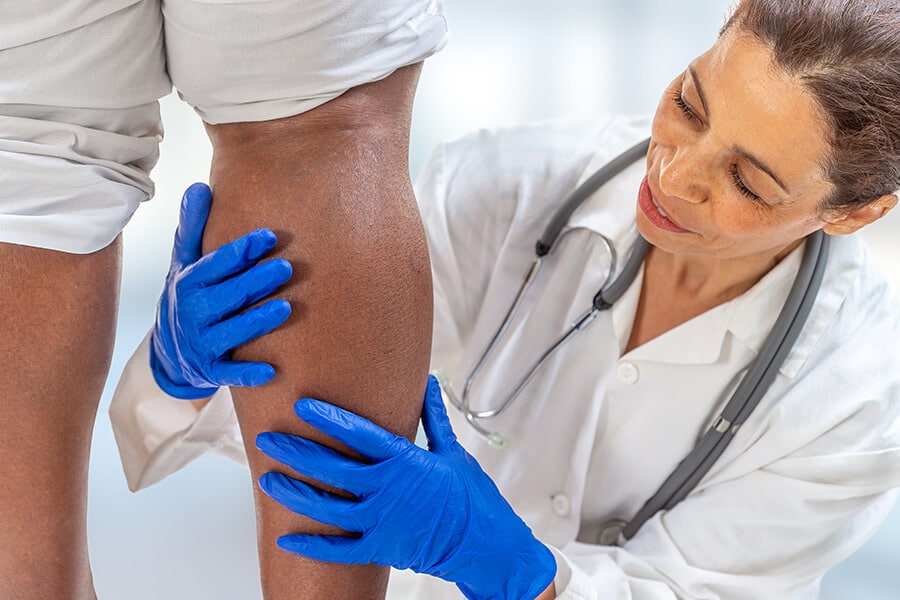What are Varicose Veins?
Varicose veins are twisted and enlarged. Any vein may become “varicose”, but the veins most commonly affected are those in the legs and feet. That’s because standing and walking upright increases the pressure in the veins of the lower body.
Some varicose veins are highly visible as they may be just under the skin’s surface and be dark blue with obvious twists and bulges. Spider veins, named for their striking spiderweb appearance, are one type of varicosity visible on the skin’s surface. Other varicose veins are not visible from the surface. These varicosities are a frequent cause of problems even though they may be completely invisible to the eye. Many people have only mild symptoms and may be concerned with the cosmetic appearance. For other people, varicose veins can cause aching pain and discomfort. Sometimes varicose veins lead to more serious problems. This condition may also signal a higher risk of other circulatory problems.
What are the Symptoms of Varicose Veins?
Mild symptoms may include:
- Heaviness, burning, aching, tiredness, or pain in your legs (symptoms may be worse after you stand or sit for long periods of time)
- Swelling in your feet and ankles
- Itching over the vein
More serious symptoms include:
- Leg swelling
- Swelling and calf pain after you sit or stand for long periods of time
- Skin changes, which could include color changes
- Dry, thinned skin
- Inflammation
- Scaling
- Open sores, or you may bleed after a minor injury

What are the Treatments for Varicose Veins?
Home Treatment
A variety of home treatments may be all you need to ease your symptoms and keep them from getting worse.
Minimally Invasive Vein Ablation
A common treatment for varicose veins is called vein ablation. Vein ablation is a minimally invasive procedure, most often performed in an outpatient setting. Typically with the use of numbing cream and/or local anesthetic applied to the area of the vein to be treated, a specialist will insert a catheter through a small incision into the abnormal vein and use an ultrasound device to observe the vein and map out its path. After the catheter is in place, an electrode is inserted and exposed and It heats the vein, cauterizing it (closing the vein) as the catheter is removed.
The vein ablation procedure generally takes about one hour to complete from start to finish. The procedure, depending on the number of veins, size and location will typically vary from being relatively painless to bringing about a bit of mild discomfort. Patients may feel slight pressure when the catheter is inserted, but often the most uncomfortable part is the injection of the local anesthetic.
After the procedure is complete, patients are directed to wear a compression stocking to limit tenderness and bruising. Normal activity and lifestyle may be resumed immediately; however, air travel and prolonged sitting are not recommended for a short period of time.

What is VenaSeal vein ablation?
VenaSeal is a minimally invasive form of sclerotherapy used for superficial veins in the legs. During this procedure, a solution (the sclerosing agent) is injected into the vein, causing the blood vessel to scar and eventually disappear. This procedure involves no heat, so it has no risk of skin burns or nerve damage. The sclerosing agent is a special adhesive that will eventually be absorbed by the body.
Because only local anesthesia is required, most patients can return to normal activities the same day. It may take a few weeks to a few months for the treated vein(s) to disappear fully.
What is Radiofrequency Ablation?
Like sclerotherapy, radiofrequency ablation (RFA) is a minimally invasive treatment for varicose veins. To perform RFA, a small incision is made to place a thin tube (catheter) into the vein to be treated. The tip of the catheter makes radiofrequency energy that heats the tissue and causes it to scar. Depending on the length of the varicose portion of the vein, the process may need to be repeated several times to treat the vein. Because the process uses heat to close the vein, the procedure is usually done under sedation, and an anesthetic solution (called a tumescent) is injected along the length of the vein(s) to be treated.
Because of the need for sedation, RFA takes a bit longer than sclerotherapy to complete. After the procedure, patients will need to wear compression stockings for a week or more. Patients may experience soreness for a few days, but most can quickly resume normal activities.
What is Phlebectomy?
Phlebectomy is a minimally invasive procedure in which varicose veins are removed using a small scalpel or a needle. After using a sedative and local anesthetic, the doctor will make small cuts and remove the affected vein(s).
Because of the need for sedation, phlebectomy can take a bit longer than sclerotherapy to complete. After the procedure, patients will need to wear compression stockings for a couple of weeks. Patients may experience soreness for a few days, but most can quickly resume normal activities.
Choice of Vein Treatments
As defined above, we are able to offer a variety of minimally invasive vein treatments. The selection of which treatment is based on your clinical picture (number of affected veins and your symptoms) and your financial situation. When you come in, we will evaluate your complete situation, and we will decide together the best course of action for you.
An informative and caring process
Our patients want to make informed decisions about treatment with a trusted, world-class medical group that supports an effective pain management plan.
We have responded with processes that are minimally invasive and limit your loss of work and personal time. Our experienced physicians and staff keep you informed at each step of the process.
We always provide a personalized evaluation, treatment, and pain management plan. Our support continues after treatment with a comprehensive follow up plan.

